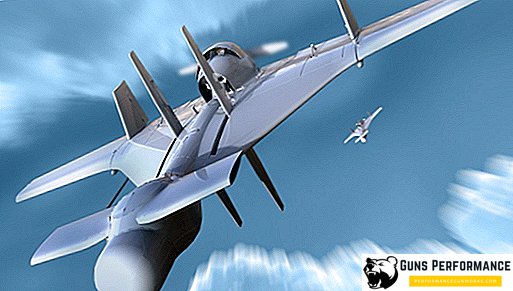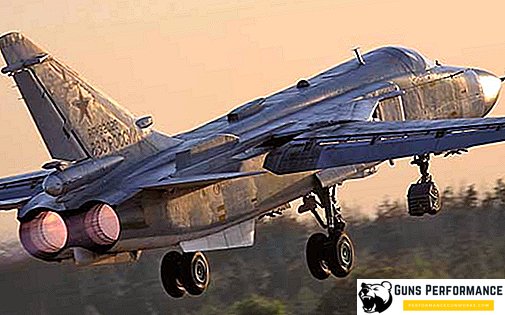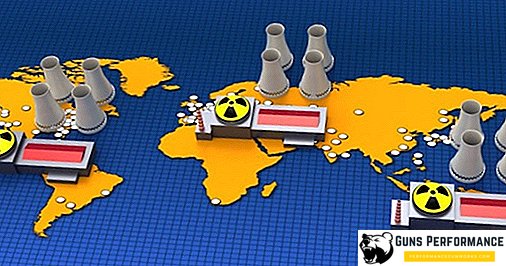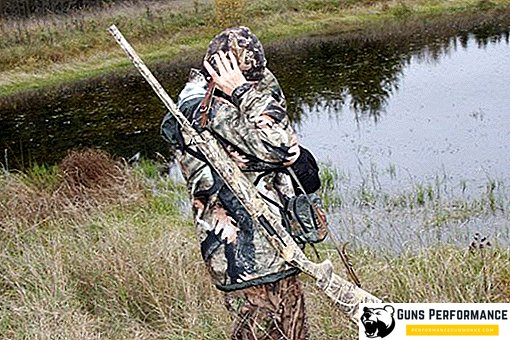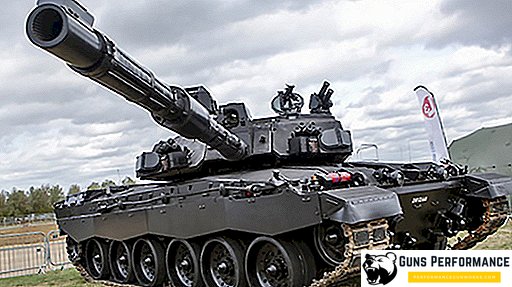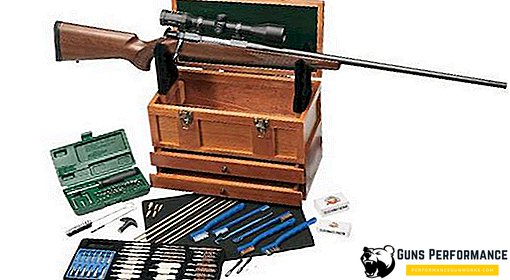
Many people who have firearms do not know how to clean them properly. It does not matter if you are a hunter or just an air rifle or pistol holder, any weapon needs care and proper cleaning.
Do not think that sets for cleaning weapons are unnecessarily expensive and save them. Of course, there is a universal set for cleaning weapons, but if you are an owner of an expensive or antique gun or rifle, you should choose highly specialized sets designed for a specific caliber.
Any weapon, even if it is a 4.5 mm pneumatics, should always work flawlessly. To do this, it must be kept not only clean, but also regularly clean the barrel and all mechanisms that may affect the quality of the shot. If a misfire of an air rifle can lead to a maximum of fired shooting at the shooting range, then a misfire of a smooth-bore or rifled weapon can cost the lives of its owner.
When buying your first weapon, it is advisable to immediately purchase a kit for cleaning weapons of the appropriate caliber. You should not buy a beautiful gift set, its functionality is unlikely to surpass the quality of simple sets, but the price can be 10 times higher. Such a set can be chosen as a gift to a hunter who goes hunting a couple of times a year and will very rarely clean his weapon. Otherwise, the beautiful set will quickly lose its attractive appearance.
What to do when buying a new weapon

There is a common misconception that a new weapon does not need to be cleaned. Many do not consider it necessary not only to clean new weapons immediately after purchase, but even carry out the first cleaning after a few months of using weapons. You should not completely trust the manufacturer, especially since a new weapon often needs re-activation (which is the removal of conservation lubricant).
The weapon is carefully inspected, all oil leaks are removed and the operation of the trigger on the cartridge case is checked (if you have a firearm). After a thorough check, you need to target the weapon in the shooting range or at the shooting range. If this procedure is not mandatory for pneumatics, then any firearm must necessarily be adjusted.
Weapon care during operation

Firearms or airguns should be cleaned at least once a month, even if they are simply in the safe. If we neglect this procedure, then soon rust spots will appear on the barrel and metal parts of the weapon. Since gun steel is very afraid of dampness, it should be stored in a dry place, it is desirable to wrap it in oiled paper. If the weather is damp outside, the weapon should be worn in a leather case or thick fabric.
To lubricate the metal parts of the weapon, special gun oil is used, and the barrel is cleaned with a cloth. After cleaning, the remaining oil should be removed, it is especially unacceptable to leave oil on the wooden parts of the weapon, the tree will darken and become brittle.
Do not walk, leaning on the gun as a cane, and the more to pick the gun in the ground. Butchering the beast with the butt also does not follow (if the life of the hunter depends on it, then you can). Do not use when firing ammunition that is not designed for this weapon, even if the caliber is suitable. For example, the magnum cartridges can break the barrel of a gun, which is not intended for them.
The main condition for the preservation of your weapons will be thorough cleaning after each shooting or hunting. It is undesirable to clean the rifle using the smooth-bore gun cleaning kit.
How to clean a hunting smooth-bore and rifled gun

When cleaning hunting weapons, you should follow a certain algorithm of actions:
- If a rifle is of a critical type, then it should be broken, it is desirable to remove the barrel from a conventional rifle;
- You need to screw a special metal brush onto the cleaning rod and clean the entire barrel from the inside from the lead;
- Then the same operation must be repeated using a steel brush. In contrast to the brush, the brush is brought only to the muzzle constriction;
- After the brush, cherries are used with a cloth that removes the lead particles that the brush has scraped off;
- After the bob, a bristle brush is used, which is lubricated with a special lubricant.
It should be remembered that cherries with a rag should be used until traces of lead cease to appear on it. If the cloth has been changed several times, and traces continue to appear, you should once again walk with a metal brush. Lead in the barrel is dangerous due to the fact that corrosion centers are formed very quickly under it. If the traces of lead are not removed even with a brush, it should be wetted with kerosene. In the most difficult cases, use turpentine or special chemicals.
All wooden parts of the weapon are lubricated with special gun oil and polished with a soft cloth.
Kits for cleaning weapons, their differences from each other

Many believe that it is enough to have one universal set for cleaning weapons. In fact, there are many types of them, which can be divided even by caliber:
- Pistol kits that are quite compact and often of low quality. For example, a 4.5 mm gun cleaning kit (these are 4.5 caliber air guns) are often made from ordinary brass-coated steel wire. It is easy to imagine how the inner surface of the barrel of a pistol, which is regularly cleaned with a steel brush, will become;
- Cleaning kits for rifled weapons, which can be either universal or designed for a specific caliber;
- Smooth-bore gun cleaning kits. They are often divided by caliber. For example, there is a set for cleaning weapons of 12 caliber, and there is a set for cleaning weapons of 16 caliber. These kits are often universal and are supplied with different nozzles for different calibers. A separate subgroup can be considered kits for cleaning weapons 410 caliber, since this caliber also belong to the category of smooth-bore, it has everything you need for cleaning. It is worth noting that 410 caliber in our country is extremely rare, so the cleaning kits do not come on sale often and, as a rule, have a high price (but the quality corresponds to it);
- Airgun cleaning kits are also recommended. Although it seems that pneumatics caliber 4.5 fires at the expense of compressed air and its barrel should not be contaminated, this weapon also needs regular cleaning.
In addition to division into such categories, cleaning kits are:
- Universal, which can be cleaned and smooth-bore and rifled weapons;
- Gift, which are usually in the trunks of precious woods and, often, are decorated with engraving;
- Sets-cylinders, very comfortable and compact, which consist of a cord-cleaning rod and a few nozzles;
- Sets with a broach are a cord with a brass insert. Often in the kit is a special oil used when cleaning. This set will not be able to perfectly clean the trunk, but in field conditions it is very useful.
In addition to these kits, special angular brushes are sometimes found on sale, which will help to clean out hard-to-reach places.

The contents of the standard set for cleaning weapons
Before you buy a set for cleaning weapons, answer yourself a few questions:
- You choose it for yourself or as a gift;
- Will you keep at home or take on the hunt or shooting;
- Do you often shoot?
After you honestly answer these questions, it will be clear which set is better to choose. Naturally, high-quality and branded kits will cost much more, but if brushes and brushes are consumables for you, then there is no point in overpaying for a company or a beautiful box.
Standard weapons cleaning kit includes:
- Folding ramrod made of brass or wood (the latter is extremely rare and only in old or expensive models). Depending on the type of weapon for cleaning which the ramrod is used, the thread on it can be both external and internal;
- Vishera are special loops through which a cleaning cloth is passed;
- Metal brushes, which are in the kit a few pieces;
- Special bristle brush;
- Puff;
- Shompol-cord (it happens not in all sets).
Why do you need to clean an air rifle or pistol

It seems that it makes no sense to thoroughly clean the rifle, firing at the expense of using compressed air, because the air is clean and does not contain aggressive powder vapors. In fact, cleaning is carried out to eliminate the effects of the interaction of lead bullets and the barrel of weapons steel.
With each shot of a pneumatic weapon, a lead bullet of 4.5 mm caliber leaves on the rifling of the barrel parts of its “shirt”. This process is called "leaded". If the air rifle barrel has the so-called "choke" (narrowing of the barrel), then lead is collected not only near the breech breech, but also at the muzzle cut too.
Lead shingles depends not only on the power of the rifle, but also on the banal purity of ammunition. The cleaner the bullets, the less dirt will accumulate in the barrel, so experienced airguns wash their ammunition before use.
Since the production of pneumatic weapons used softer steel than the production of firearms, it is more susceptible to corrosion. Although the process is rather slow, in a few months a rifle or a 4.5 mm caliber pistol can completely become unusable. Pneumatic guns that work on CO2 are particularly affected by corrosion. Sharp cooling of the barrel during a shot leads to the formation of condensate, due to which corrosion occurs.
Another reason for contamination of the barrel in the spring-piston rifles is conservation lubrication. Many buyers simply do not have a clue that this lubricant should be removed before using the rifle for the first time. When fired from an unreacted rifle, the air ignites the lubricant, and particles of burning lubricant fly through the barrel.
The main rules when cleaning pneumatic weapons

Pneumatics manufacturers who care about the quality of their products must indicate in the instruction manual how many shots they need to clean the weapon. Most often, this parameter ranges from 100 to 200 shots. It is unlikely that someone will count the number of shots made, but this can be done easily, knowing how many bullets are in a box. In addition, when a rifle or pistol requires cleaning, it can be easily calculated from the changed accuracy of fire and the appearance of the "diesel" effect when fired. Of course, it is very beautiful when sparks and smoke fly from the barrel of an air rifle, but this causes enormous damage to all mechanisms of the weapon. There have been cases when this effect caused the trigger to break.
The process of cleaning the barrel airguns
The process of cleaning airguns consists of the following steps:
- Remove lead plaque from the trunk;
- Complete degreasing of the barrel;
- Drying the barrel;
- Lubrication of the barrel with specialized means.
Removal of plaque begins with the fact that you need to push the cleaning rod into the barrel of the weapon. This operation can be performed from the end that the ramrod enters more easily. Although lead plaque is kept rather weakly in the barrel, quite a significant amount of effort is needed to inject the ramrod into the barrel. The best brush for this procedure is a bronze tool. This metal is hard enough to peel lead in the barrel, but at the same time this hardness is not enough to scratch the barrel of the weapon. The main thing is not to use steel brushes, which some Chinese manufacturers skillfully disguise as bronze and brass.
To wash the lead particles, use either a mixture of spun oil with kerosene, or a special composition - Ballistol. When flushing, you need to protect the bypass hole from the ingress of lead particles, otherwise the first “diesel” effect will occur, and you will have to repeat the entire cleaning process from the beginning.
After completion of the washing process, the barrel is thoroughly degreased. For this purpose, volatile solvents are used, which guarantees evaporation of vapors in the barrel by the time of the first shot after cleaning. To assist in the degreasing is used a nylon brush. The main thing is to make sure it is resistant to solvents, otherwise you will get a polymer coating instead of a lead coating for the barrel.
Drying can be used instead of degreasing. Ideal for drying is the tool from the set for cleaning airguns - cherries. Good cherries are made of bronze and have a special groove into which a strip of fabric is pushed. Drying should continue until the strips of cloth no longer have lead and oil particles on them.

There are several opinions about the use of lubricants in the pneumatic barrel. According to one of the versions, a thin layer of lubricant will provide the bullet easier sliding, due to which the power of the shot will increase. On the other hand, it is worth only a little to shift the lubricant and the accuracy of shots should be forgotten.
What must be included in the set for cleaning airguns
Every owner of a pneumatic weapon who is interested in the long and trouble-free work of his rifle or pistol must have a standard cleaning kit, which must include:
- Ramrod;
- Brushes (bronze and kapron);
- Wisher;
- A stock of patches of thin cotton fabric;
- Special oil for Ballistol weapons;
- Acetone or other volatile solvent.
When choosing a ramrod, do not forget that the use of steel tools is unacceptable. On sale are steel ramrods with plastic film, but this is also an extremely unreliable option. You need to know that the bronze brush is a consumable material and it lasts a maximum of five cleanings (a low-quality brush can “bald” after the first cleaning).
To avoid problems with weapons, it must be thoroughly cleaned. Those who were in the army remember well how much time was spent there on disassembling and cleaning the machine. If pneumatics perfectly withstands up to 200 shots without cleaning, then hunting or sporting weapons should be cleaned after each shooting. High-quality cleaning kit will help you in this difficult matter.


